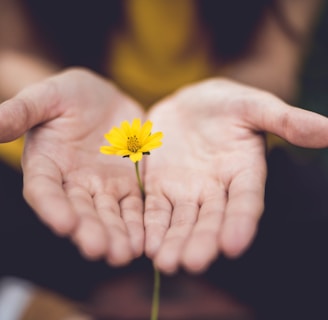Reiki: Science Meets Spirit — Why It’s More Than Just “Woo-Woo”
Science Meets Energy Healing: Demystifying Reiki Reiki isn’t just mystical jargon—it’s a therapeutic practice with measurable impact. In this article, we explore how Reiki bridges science and intuition, calms the nervous system, and finds a place in modern healthcare. Skeptics welcome!
By Michele Paull of Roots To Realms
7/12/20252 min read


Reiki: Science Meets Spirit — Why It’s More Than Just “Woo-Woo”
In the world of wellness, Reiki often gets boxed into the mystical corner—dismissed as spiritual fluff or unscientific ritual. But if you're someone who values both intuition and intellectual integrity, Reiki might deserve a second look. At my practice, I ground everything in reality and science—and that includes energy healing. Let’s explore why Reiki isn't just a fringe modality, but a complementary tool backed by growing research and respected clinical application.
What Is Reiki, Exactly?
Reiki (pronounced ray-key) is a Japanese healing technique created by Mikao Usui in the early 1900s. The method channels energy through light touch or hovering hands, with the intention of restoring energetic balance. It’s designed to activate the body’s own healing mechanisms—not replace them.
While that might sound abstract, what’s happening during Reiki often mirrors the outcomes seen in biofeedback, mindfulness, or other somatic therapies: calming the nervous system and re-centering the mind-body connection.
The Skeptic’s Lens
As a practitioner who respects science, I understand the skepticism. Mainstream medicine doesn’t recognize “universal energy” as a measurable entity, and early Reiki studies were often anecdotal or lacked rigorous controls.
But being skeptical doesn’t mean dismissive. Scientific curiosity encourages us to explore what works—even if we don’t fully understand how.
And here’s what we do know: When people receive Reiki, they often report reduced stress, improved mood, better sleep, and an overall sense of ease. Those outcomes matter—especially when supported by emerging research.
Evidence That Counts
Studies suggest Reiki may have tangible benefits:
Parasympathetic activation: Reiki can help calm the “fight or flight” response, lowering cortisol and supporting immune function. Pain and anxiety reduction: Post-operative patients and those with chronic pain have shown reduced discomfort and improved mood after Reiki sessions. Support in clinical settings: Hospitals like Johns Hopkins and UCLA have introduced Reiki into palliative and cancer care, citing improved patient satisfaction and well-being.
While more research is needed, these findings indicate Reiki’s potential as a low-risk, complementary tool—not just a feel-good placebo.
Resistance Isn’t a Roadblock
Many new clients come to Reiki with inner resistance: “What if I don’t believe in it?” “Am I being naive?” That’s valid—and welcomed.
Reiki doesn’t require faith. It invites curiosity and stillness. And sometimes, resistance signals that something meaningful is beginning to shift. Skepticism isn’t a disqualifier—it can actually deepen the healing process when met with openness.
My Practice: Grounded, Intentional Healing
I don’t offer Reiki as a stand-alone spiritual practice. I integrate it into a framework rooted in therapeutic ethics, scientific awareness, and emotional resilience. Whether you're a data-driven thinker, an intuitive feeler, or somewhere in between—you’re welcome here.
Energy healing isn’t meant to compete with medicine. It’s meant to complement it, expand your toolkit, and support you holistically.
Conclusion: Real Healing for Real People
Reiki isn’t magic. But it is meaningful. The physiological responses, emotional releases, and nervous system resets I’ve witnessed aren’t imaginary—they’re real, and often transformative.
So if you’re ready to explore a modality that respects both your body and your beliefs, Reiki can meet you where you are—no crystals required.
Roots To Realms
Where Science, Soul & Nature Align to Guide Your Path to Inner Resilience & Purpose
For direct inquiries, reflections, or collaboration requests.
Receive seasonal insights and integrative tools—opt in to begin.
hello@rootstorealms.com
Roots To Realms a dba of AltShiftZen LLC All rights reserved © 2025.